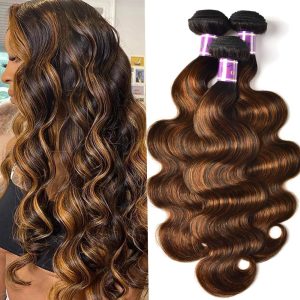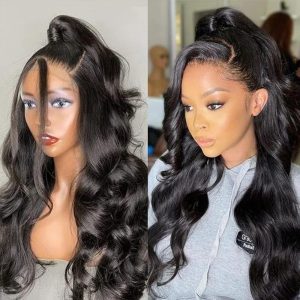Hair extensions are a popular way of adding length and volume to your hair. Many types of extensions are available on the market, but which is better?
The answer is that it depends on your preference and budget. Weaves are cheaper than wigs, but they can be harder to style. Wigs are more expensive, but they can be styled in various ways. This article will take a closer look at the differences between these hair extension types and help you determine which one is best for your needs.
Wigs vs. Weaves: What’s the Difference?
Weaves:
The term “weave” refers to the sewing, sticking, or clipping of human or synthetic hair into your natural hair. Your real hairline will still be apparent once the hairstylist has braided your natural hair flat and sewn in the desired number of hair bundles. Depending on how many bundles you are sewing into your hair, this process could take anywhere from two to six hours.

Weaves may last up to two months if they are correctly installed. They are ideal for those wishing to give their natural hair a styling break while achieving more volume. The fact that a weave is a protective style that needs moisturizing daily means that it also puts less strain on your hair.
The Advantages of Wearing Weaves
Weaves can be worn in different styles, colors, textures, and lengths. Weaves are also popular because they are easy to maintain and wash. The advantages of wearing weaves include:
Versatility: Weaves can be worn in long dreadlocks, short afro styles, braids, or as part of a high fashion hairstyle.
Easy to maintain: People with weaves avoid the mess of adding products to their hair, and some people do not rinse the weave after wearing it for days. Natural hair can be challenging to maintain because it requires regular conditioning.
Add volume to thin hair: Most weaves are made of natural or synthetic fibers that create a fiber-to-fiber bond and add volume without adding weight. This also makes the weave feel light on the head. and easy to wear.
The Disadvantages of Wearing Weaves
- It might be expensive. The hair wefts may be pretty expensive, depending on the type of weave you purchase. You are also responsible for paying your hairstylist's costs associated with braiding and sewing in your hair weave.
- They are not a wise option for balding individuals. Given that you have to sew weaves onto your naturally braided hair, they might not be a choice if you lose hair. Wigs might be acceptable in this situation.
- They are not ideal for workouts. Weaves might not be for you if you're an athlete or an extremely active gymgoer. Because of the buildup of sweat, they can emit a foul smell.
- Hair braiding may be uncomfortable. If your hairdresser braids your hair too tightly, it could result in hair loss and breakage, especially if you wear weaves frequently. In the short term, tight braiding might also result in migraines. Alopecia is a second, more severe impact brought on by the persistent stress on the hair.
- You'll need to wash your hair and weave every week. Weaves, as was previously indicated, can collect sweat and dirt, both of which carry odor. Consequently, you must wash them once a week, which can be difficult.
- They won't let your hair breathe for a while. Your weave is “attached” to you; unlike wigs, you cannot take it out before bed because it is. This implies that your natural hair will only break when you unplait it.
Wigs
A wig is a cap constructed of braided hair. They are made of synthetic or human hair, just like wefts. A wig is the best option for people with severe thinning or permanent hair loss because it covers the entire scalp.

The Advantages of Wigs
A few advantages of wearing wigs include the following:
There are various styles. You have the instant power to change the color and style of your hair. Without visiting the hairdresser, a wig might give you frizzy, long hair today and a crisp bob tomorrow.
They are available in a range of sizes. Wigs come in three different sizes: tiny, average, and enormous. By doing this, you can ensure that the wig is the right size and prevent obtaining one that will damage your hairline or ruin your experience.
A wig completely encloses your head. A wig can ensure that your entire head is covered, whether you are experiencing balding, permanent hair loss, or thinning, providing that extra confidence boost while your natural hair grows.
They are portable. Wigs are made to feel just like your own hair. They are sufficiently light to prevent neck pain from the added weight.
They are affordable. Depending on the quality, wigs can cost anywhere from $50 to $3,000. They do not, however, call for an additional installation fee. Wigs can also survive for many years with proper care. Think of it as a self-sustaining investment.
The Disadvantages of Wigs
The following are some drawbacks of wearing wigs:
The initial days might be difficult. Positioning and arranging your wig can be highly stressful, but you'll get the hang of it with practice.
Make the decision between genuine hair and synthetic wigs. It might be very challenging to decide between the two. Although it has a more natural appearance, humidity significantly impacts human hair. Conversely, synthetic wigs look shinier than human hair and maintain their original shape even in hot temperatures. Still, they have a shorter lifespan and don't hold styles as well as wigs made of human hair.
Final Thoughts: Wigs or Weaves?
It is unreasonable to compare wigs and weaves even though they aim to increase your confidence in your hairstyle. They are two entirely different haircuts, each with its advantages and disadvantages. The ideal option will rely on your requirements and preferences.
For instance, a wig will be most helpful if you have completely lost all of your hair. However, a weave is the best option if you want something that requires less regular upkeep.
Before deciding, consider your needs, weigh the benefits and drawbacks of wearing a weave against a wig, and select the best option that suits your needs and way of life.
